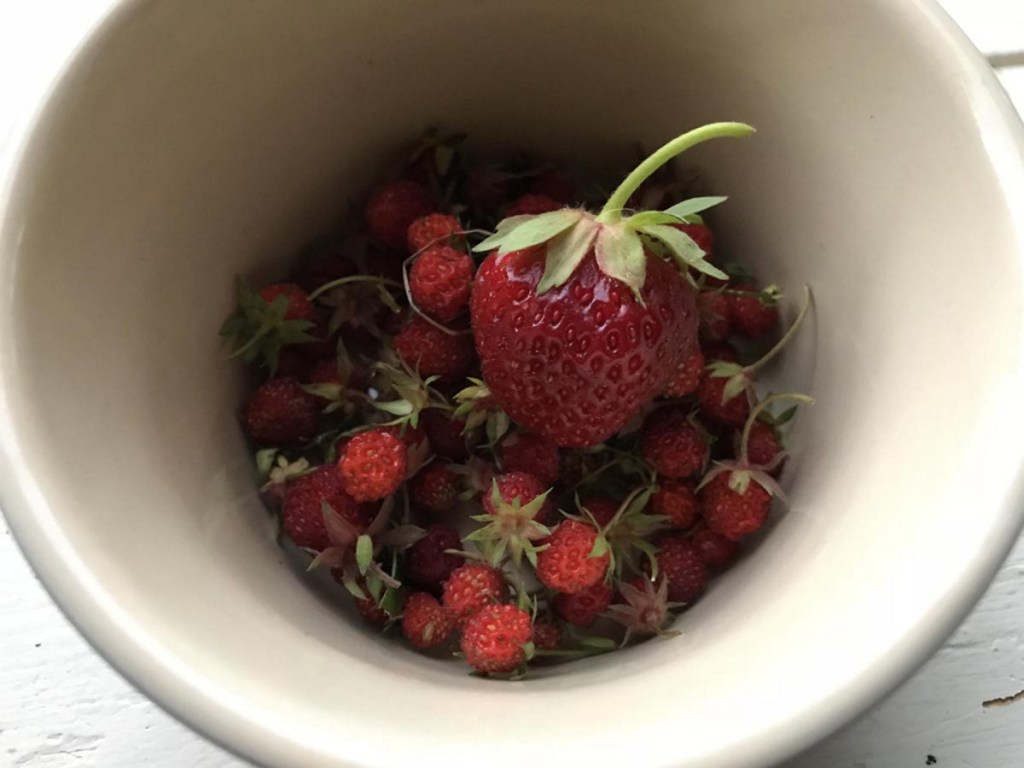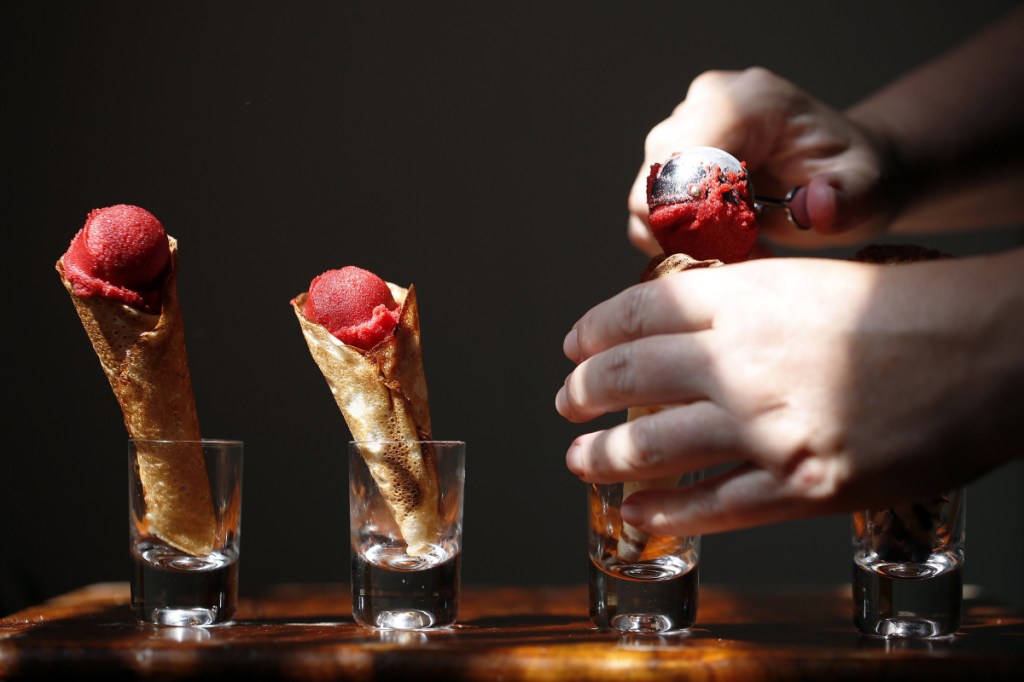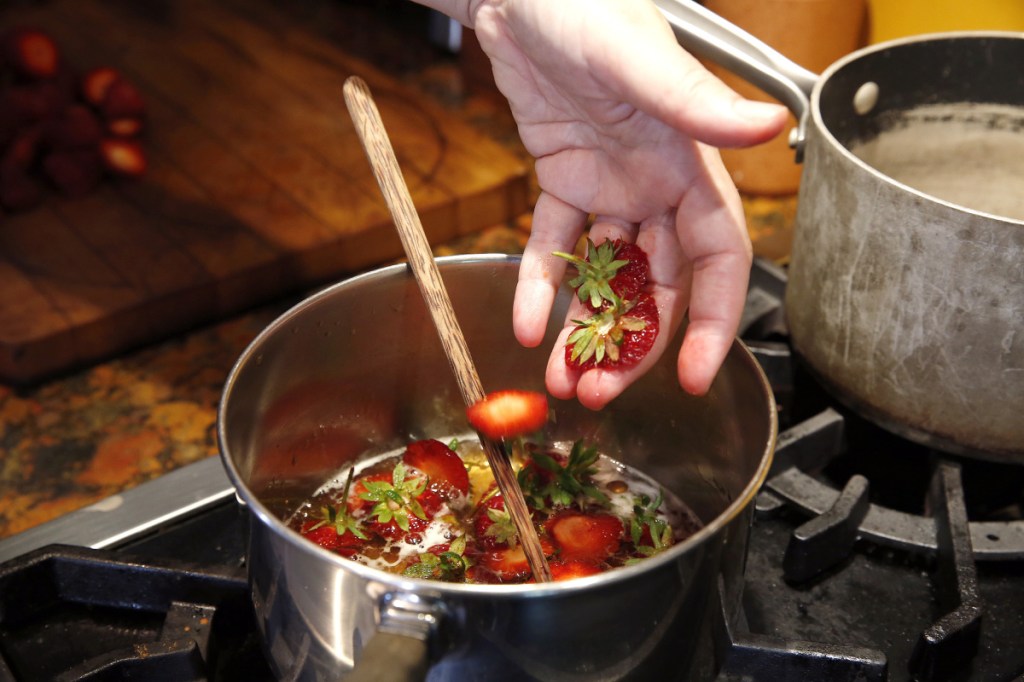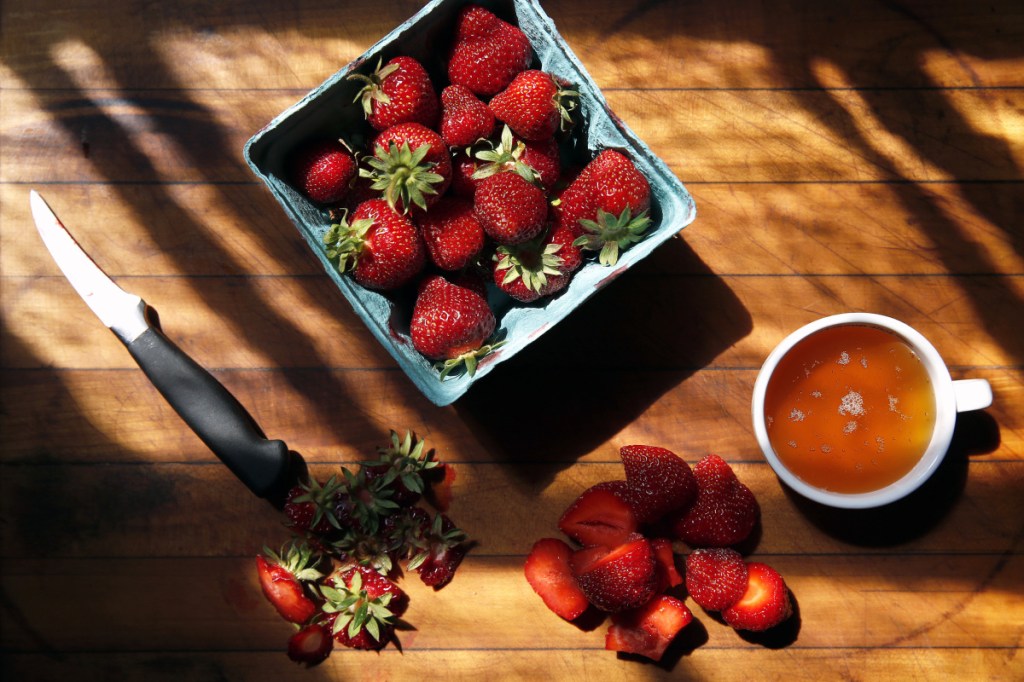June’s full moon is called the Strawberry Moon. According to the Farmer’s Almanac, it got its name from the Algonquin tribes who understood it as a signal to start to gather the ripening fruit of wild strawberry plants. This year’s Strawberry Moon is predicted to hang in the night sky this Thursday.
Wild strawberry is a native plant found in much of the United States and Canada. The University of Maine Cooperative Extension’s fact sheet on the perennial plant says it is also called Virginia strawberry (F. virginiana). If you’re lucky you can find these herbaceous (i.e. not woody) plants growing in fields near woodlots, along paths running through open meadows, on roadsides and even on lawns left just a smidge less than perfectly manicured. They sit close to the ground, rarely growing taller than a foot high. As it is a creeping plant, the wild strawberry (like its cultivated cousin) proliferates new plants on runners that extend along the surface of the soil, rooting as they grow. Their five-petaled white flowers normally appear in Maine in late May and early June with fruit to follow, providing food for many small animals and birds (and sometimes humans).
The berries are tiny, but as Kennebunk forager Josh Fecteau describes them on his website, “… what they lack in size, they more than make up for in flavor.” Wild strawberries sport divided leaves consisting of three, toothed leaflets with the terminal tooth of the center leaflet being less than half the width of the adjacent teeth. Its berries are smaller than your thumbnail and have plenty of embedded seeds that snap against your own teeth when you pop one into your mouth. They burst with strawberry flavor you’ll recognize, but are as tart as they are sweet. Fecteau advises foragers to take a moment to take in the ripe berries’ perfume before eating them.
But finding these berries in enough quantity to cook with is an exercise proving just how catch-as-catch-can the prospect of harvesting wild strawberries can be. I know, because in the last few weeks I’ve looked pretty much everywhere for them.
My meandering walk through a large meadow near a tributary of the Damariscotta River last Thursday yielded nothing but the need for a tick check. My weeklong plea to local Facebook friends uncovered many flowering plants in various spots around the midcoast as well as a realization of how a careless plow guy had pushed gravel onto on friend’s patch; still, not a single berry.
My editor said she had plenty in her yard and instructed the gentleman who mows it to leave them intact. She noticed quite a few near-ripe ones the morning we exchanged emails on the subject, but she reported later that day that critters got to them before she could. They’re so very small and fragile, she added, it’d probably take near an hour just to gather a cup. When I asked my favorite flower vendor at market if he might have any on his property, he pointed me to the potted Alpine Strawberry plant he had for sale. Alpines are domesticated plants that yield berries of similar size as wild ones. I thought the one ripe berry on the plant I bought might just hold on long enough to serve as a garnish for the honeyed strawberry sorbet I’d planned to make and take a photograph of. I set it on the stoop to get some sun. The chipmunk living under to stoop apparently thought that was a fabulous idea, and he partook.
The moral of this story is this: gather (and eat) ye wilde berries while ye may.
ABOUT THE WRITER
CHRISTINE BURNS RUDALEVIGE is a food writer, recipe developer and tester, and cooking teacher in Brunswick, and the author of “Green Plate Special,” a cookbook from Islandport based on these columns. She can be contacted at cburns1227@gmail.com.
Copy the Story LinkSend questions/comments to the editors.







Success. Please wait for the page to reload. If the page does not reload within 5 seconds, please refresh the page.
Enter your email and password to access comments.
Hi, to comment on stories you must . This profile is in addition to your subscription and website login.
Already have a commenting profile? .
Invalid username/password.
Please check your email to confirm and complete your registration.
Only subscribers are eligible to post comments. Please subscribe or login first for digital access. Here’s why.
Use the form below to reset your password. When you've submitted your account email, we will send an email with a reset code.